
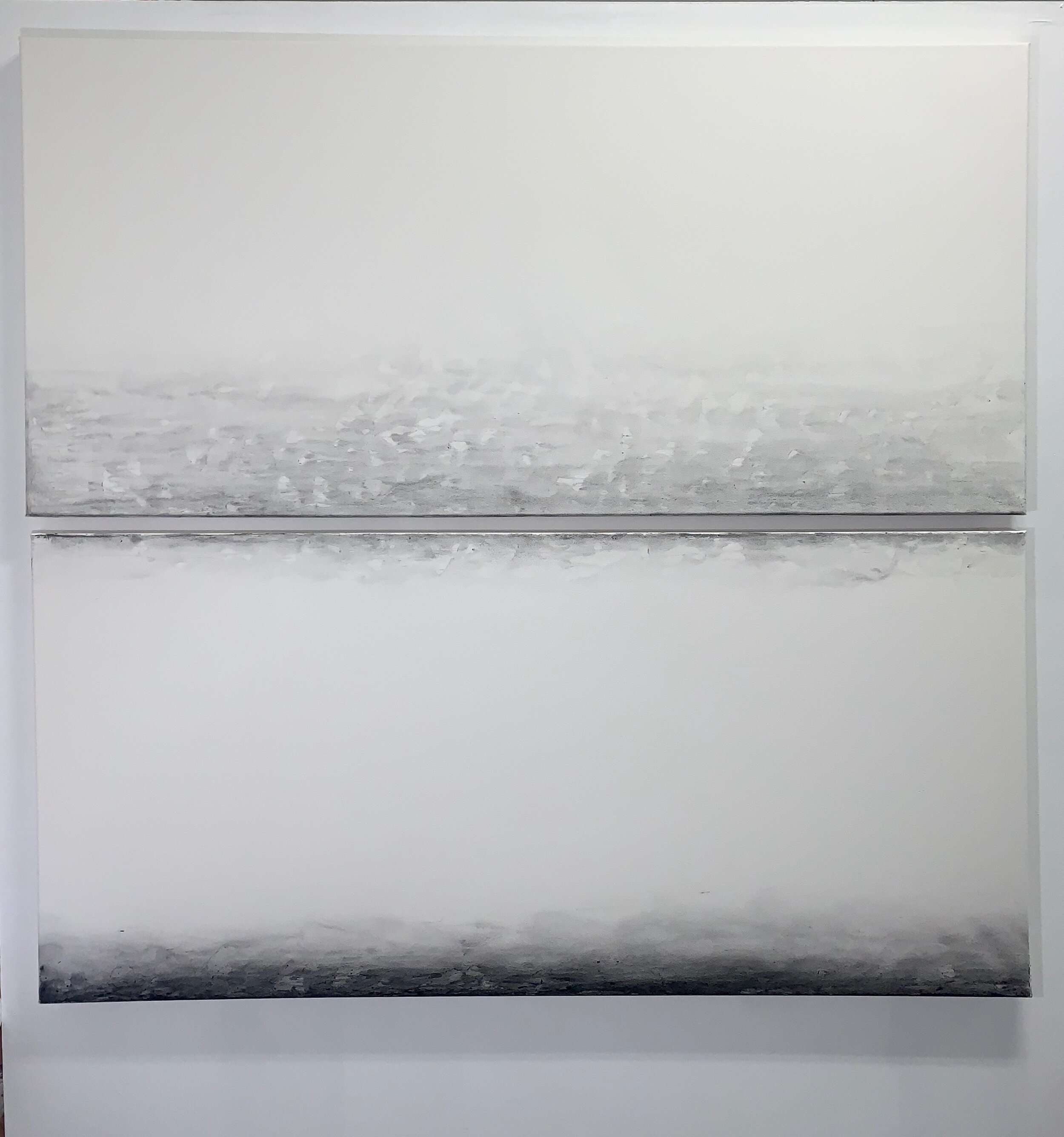



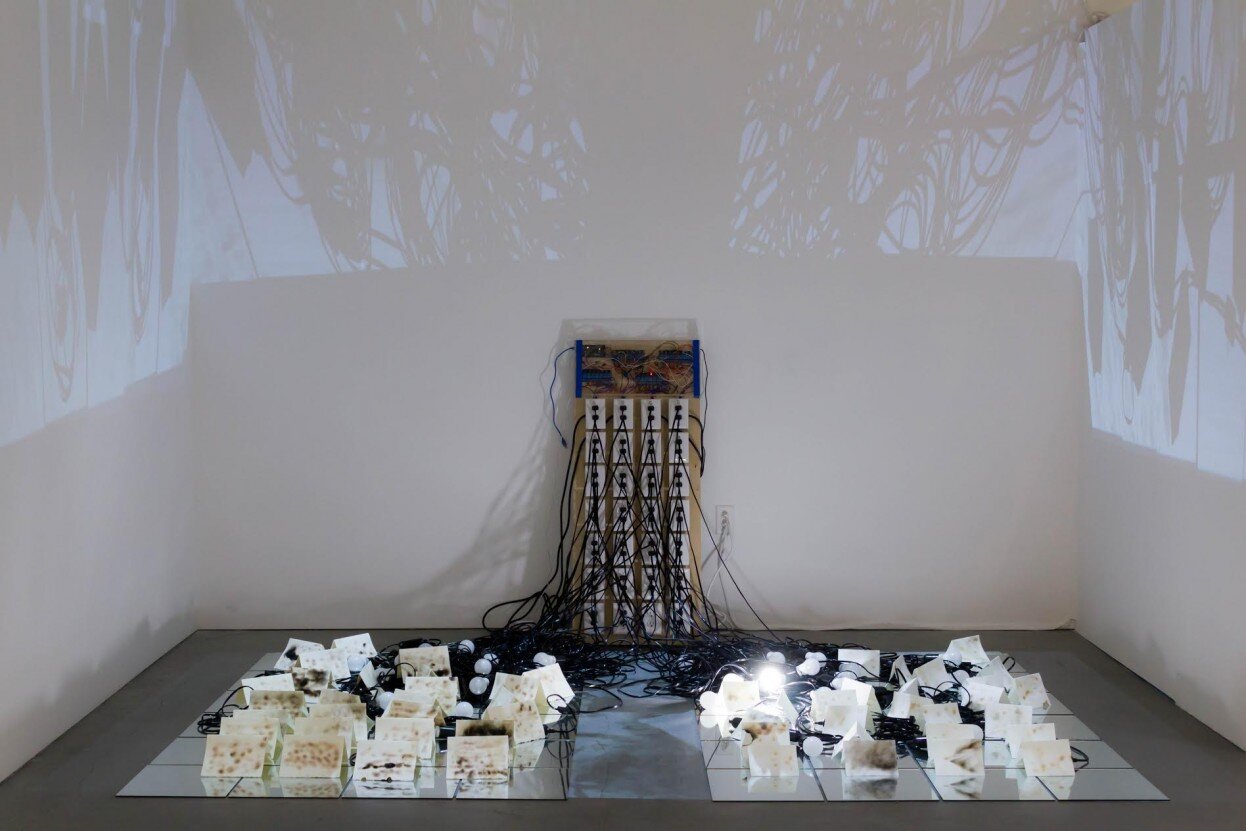
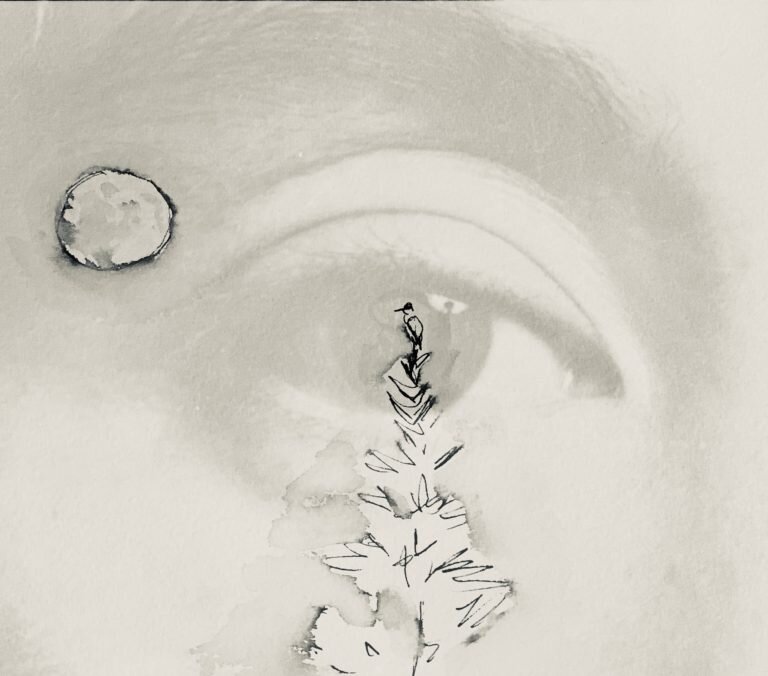
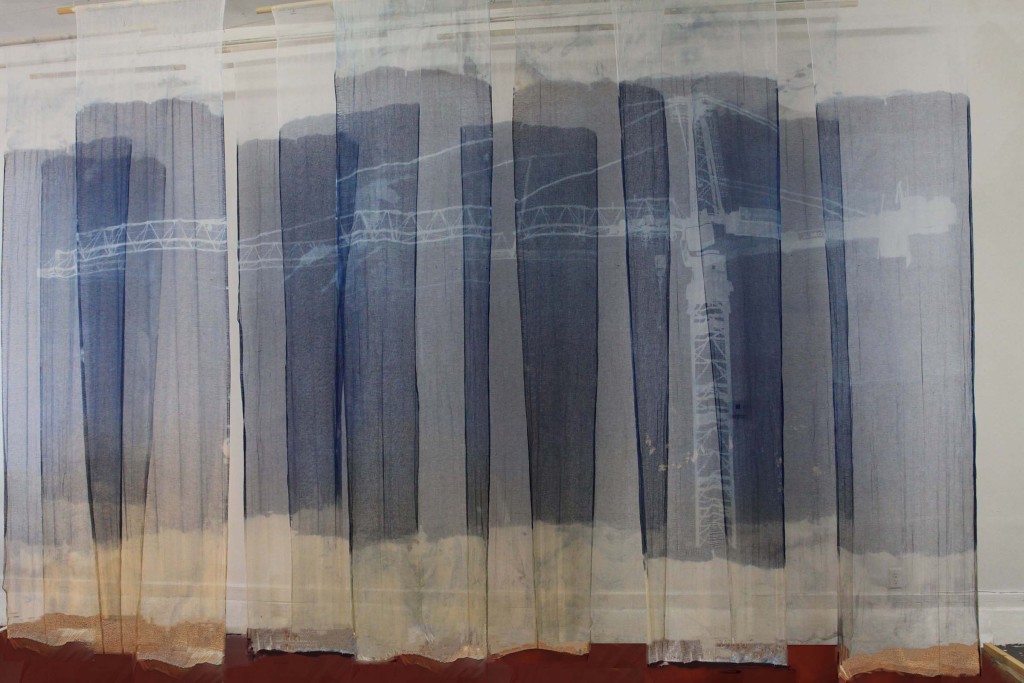
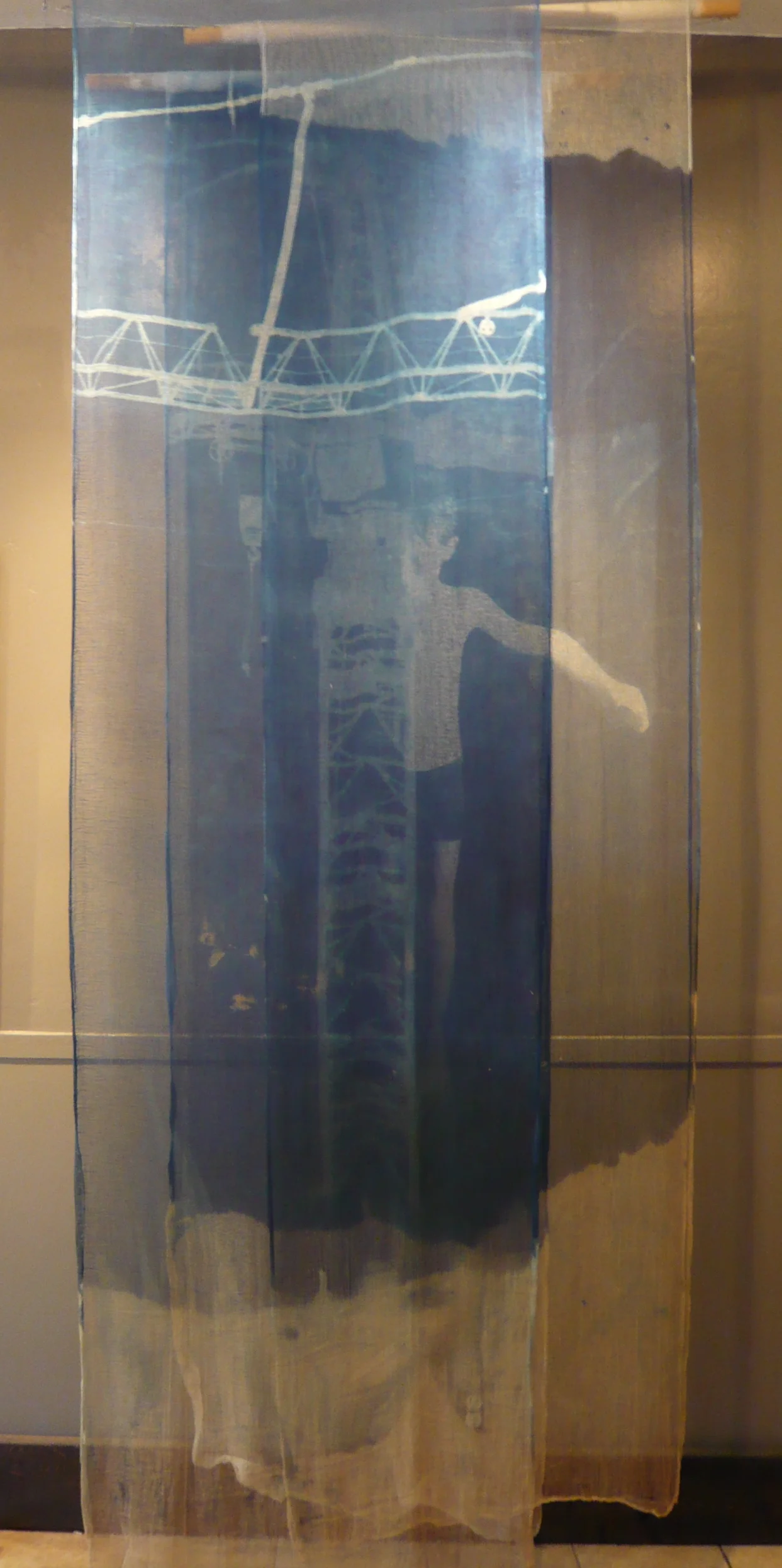

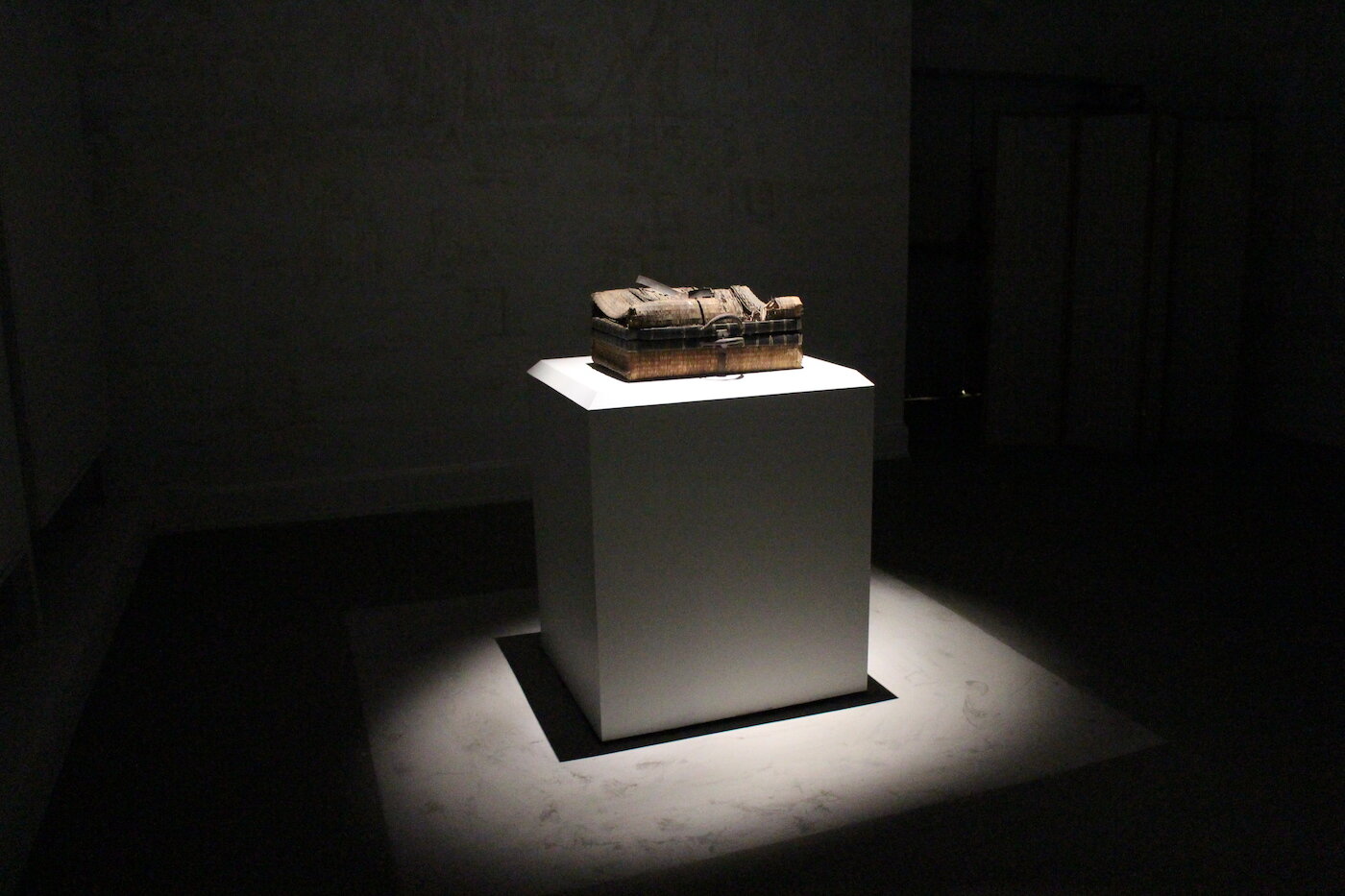

Summer Mei Ling Lee, Box of Medieval Moonlight, unique art objects for sale during Church on the Moon happening, 2019. Please contact gallery for more information.

“Summer Mei Ling Lee and Laura Boles Faw’s collaborative installation, An Atlas of the Invisible, on view at Minnesota Street Project as part of the exhibition re:home (curated by Amy Kisch of AKArt, Candace Huey of re.riddle and Suzanne Zuber), furthers the show’s exploration of the themes of sanctuary, home/homelessness, and the displacement of artists and creative professionals in the San Francisco Bay Area. Boles Faw’s departure from San Francisco after thirteen years prompted a set of collaborative works and exchanges with Lee, a fellow artist and friend. An Atlas of the Invisible (2018), by extension, offers a reunion between Lee and Boles Faw in a work that responds to the tensions between San Francisco’s technology boom and artist flight.
The installation consists of fifty-two letters exchanged between Lee and Boles Faw between the summer and fall of 2018, written with invisible ink. In order to render the text legible, Lee and Boles Faw carefully placed each letter over a flame, a gesture that both reveals and deteriorates the content of the letters. Incandescent bulbs fleetingly blinks to reveal the handwritten texts. A switchboard at the installation’s center, covered with a grid of outlets and a bed of exposed wires, reveals the mechanics that control the lighting apparatus while inviting other metaphors of vulnerability.
A video projected from above depicts the burning of the documents, a record of the performed gestures behind the installation. The visual disruptions make the letters all but impossible to read; the artists evoke a sense of absence by creating an immersive physical space that overwhelms the viewer and draws attention away from the content of their written correspondence.
An Atlas of the Invisible prompts complicated questions about the tensions between legibility and erasure. Lee and Boles Faw’s labor-intensive form of communication considers the complexities of separation and the need for authentic communication while the overwhelming, machine-based environment of the installation invites larger conversations about the impact of technology in the Bay Area and the ways it has overtaken our cultural landscape. By extension, An Atlas of the Invisible creates a disruptive sensorial experience that produced a feeling of loss, of displaced bodies, words, and systems.” - Hoi Leung, Curator of Chinese Culture Center San Francisco.
Image Credit: Summer Mei Ling Lee and Laura Boles Faw. An Atlas of the Invisible, 2018; multimedia installation (electronic outlet board, lights, video projection, and handwritten letters written with invisible ink. Additional technical programming by Melanie Piech.) Photo: the Artists, AKArt, and re.riddle.

Summer Mei Ling Lee, Church on the Moon, 2019, Happening/Anything, part of Pour the Line exhibition curated by re.riddle for the Et. Al series at Abacus Row.
In these end times, there are those who wish to colonize the moon, technocrats unaware of their past mistakes born of hubris, who wish to conquer and exploit the lunar landscape. Right now, instead of learning to die, they are planning the means to build and live on the moon for future civilization.
Throughout human history, on every land that humans have colonized, they have built a place of worship: The caves of Chauvet, Mayan temples, Tin Hau temples, Stonehenge, chapels in airports, and street altars in neighborhoods. Even a whaling station on an uninhabitable island of Antarctica has a church.
What does it mean that no one has conceived of or proposed a cathedral, or temple, or altar on the moon? Is there a relationship to the calculative thinking of the disconnected scientific bourgeoisie and the absence of a visionary, communal meeting place to greet the uncertain Other? Is it because we are no longer interested in a project that is not useful or productive or income-generating?
The moon is the constant glowing presence that can catch one speechless and humbled by its otherworldly light. Other times it is forgotten and unseen, until we return to it by dint of romantic memory. The moon was a mirror for Saigyo, a poet in the 1100’s. Central to his haikus, the moon was solace from the decadence and despair of his era. It is the same moon my loved one just saw hours before me, on the other side of this planet. And the same moon a woman not too unlike me gazed at 30,000 years ago from a frozen tundra.
And now they will ruin it.
I propose a church on the moon. It will never be built, but it will be dreamt. And in our dreaming we might chance upon our human dignity. - Summer Mei Ling Lee

Summer Mei Ling Lee, Luminous Ruins, Installation of Cyanotype and Chinese black tea on fabric panels.

Installation, cloth panels and video projection.
Pieta was created for UNTITLED, San Francisco Monuments Program, to be showcased at the Palace of Fine Arts. The main feature of the work entails two opposing video projections, one in the form of Mary and the other Jesus. Lee invited an artist in Italy to submit the image of Mary, thus bringing the distant geographic and emotional realities into the nearness of a repetitive forming and dissolution of the tableau vivant. The two opposing projections pass through each other and cast singular images on opposite walls. However, the two projections meet in the middle of the installation space on moving diaphanous fabric panels where a pieta-like image is formed. Lee's work focuses on the themes of absence/presence, light/dark and the notion of "into the nearness of distance".

Installation view of Summer Mei-Ling Lee’s Requiem at the Chinese Culture Center of San Francisco. Photo: Courtesy of Chinese Culture Center, San Francisco.
Summer Mei Ling Lee’s Requiem critiques the effects of the neo/new diaspora, centering on the themes of displacement and migration of peoples resulting from geo-political conflicts and globalization. Lee’s Requiem, commissioned by Chinese Culture Center of San Francisco pays homage to Hong Kong’s Tung Wah Hospital’s role in the repatriation of Chinese immigrant bones to China. Lee’s research of the bone boxes in Hong Kong, Kaiping and China is featured in a documentary film, Requiem.
Discover more about Requiem here.
For more information on the work of Summer Mei Ling Lee, please click here.